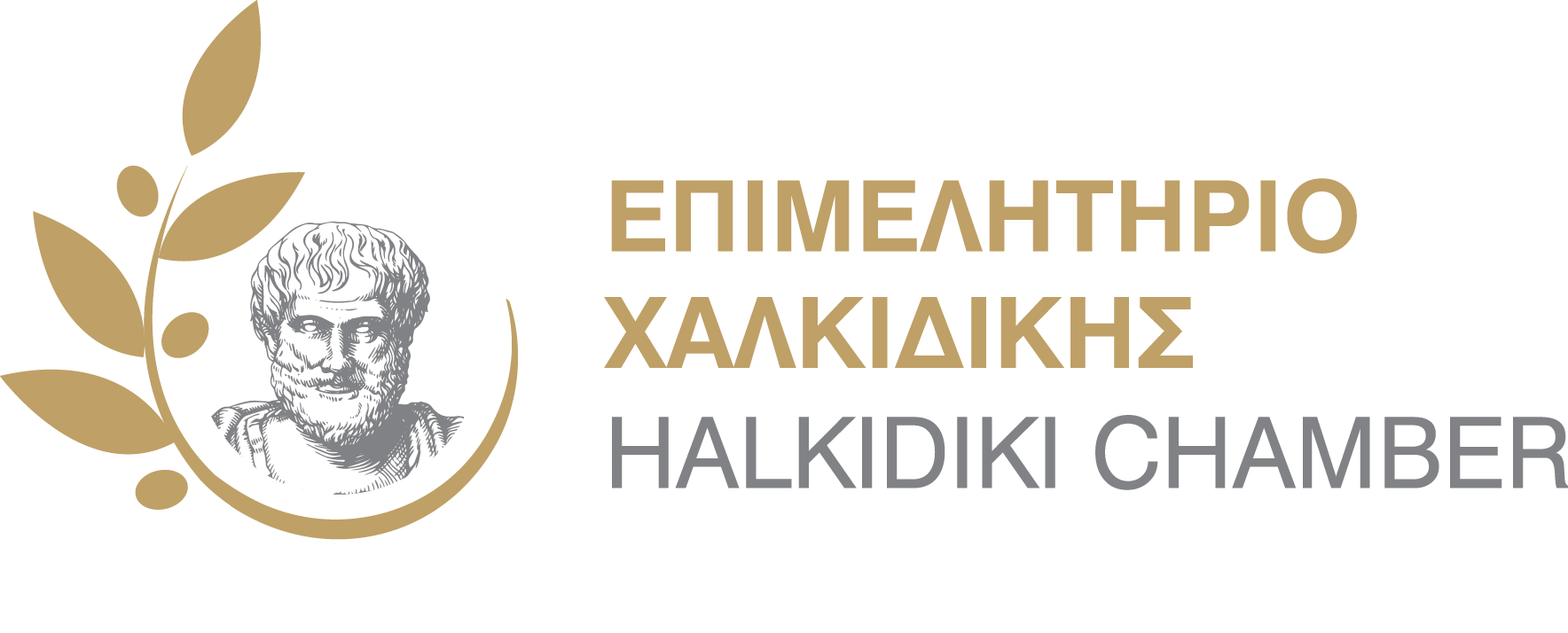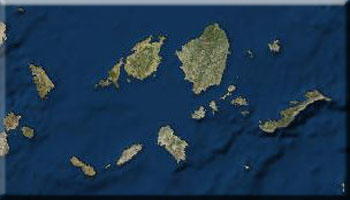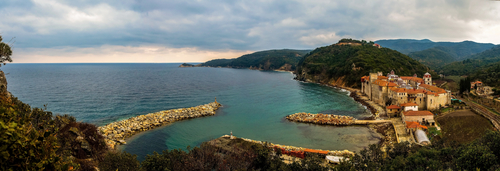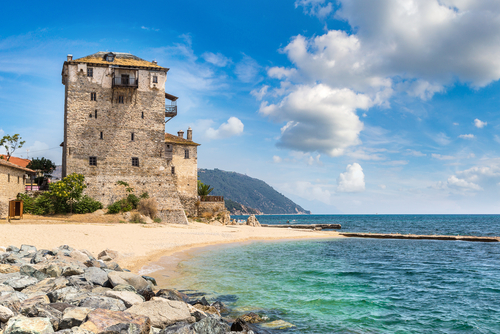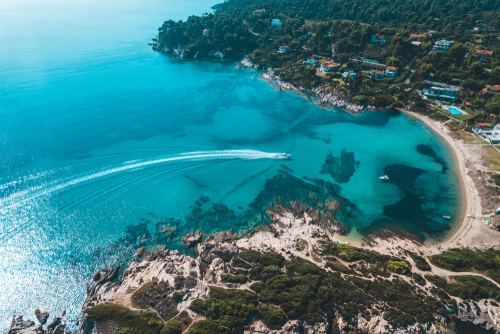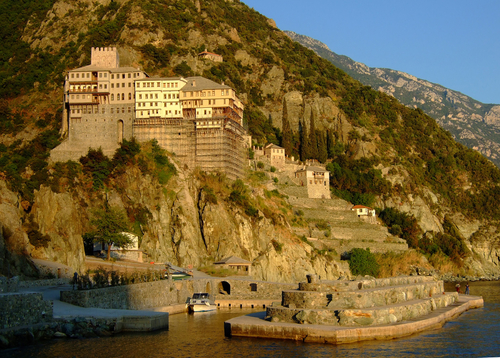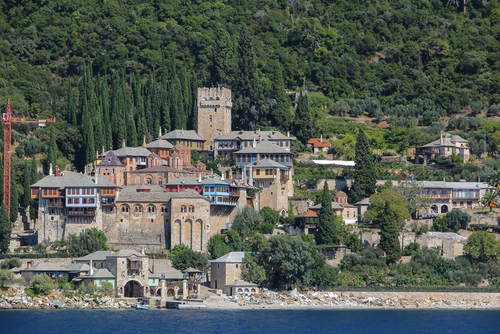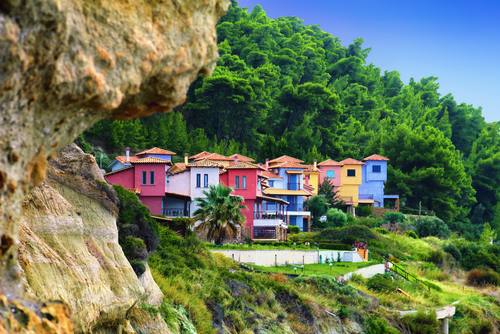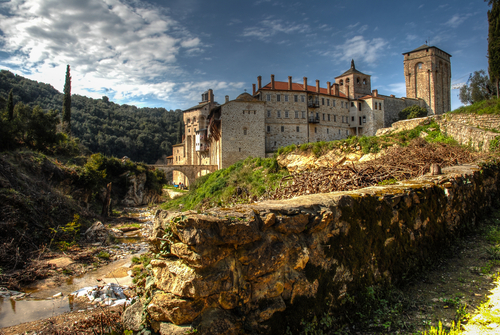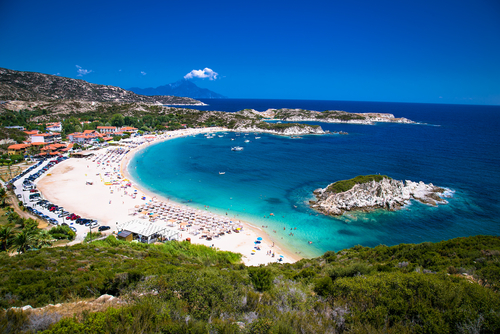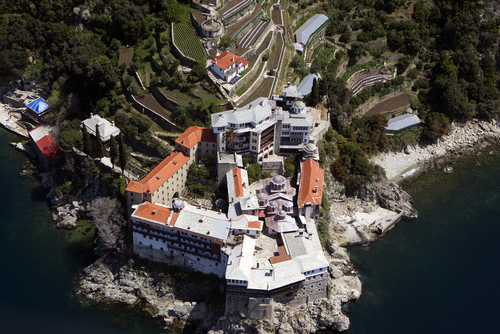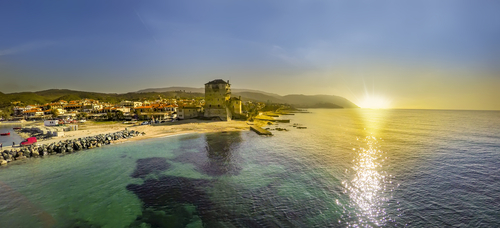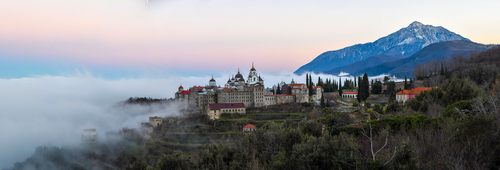ARCHAEOLOGICAL PLACES & MONUMENTS
Ancient Olynthos
On the peninsula of Kassandra, near the coast of the Toroneos Gulf, on two hills are the ruins of the ancient city of Olynthos, which Herodotus also mentions. According to tradition, the creator and hero of the city was Olynthus, the son of Hercules or the Thracian god Strymon. It was the capital of the Chalkideans and was the most important economic and military centre of the region from the 5th century BC until its destruction by the king of Macedonia, Philip II, in 348 BC. After the excavations, much of the city came to the surface. The archaeological site includes the two hills where the city extended, and a significant part of the finds are in the Archaeological Museum of Olynthos. Entering the archaeological site, an inclined path will lead you up the hills, where you will discover the structure and organisation of this glorious ancient city.
Ancient Mendi
Thoukidides refers in his writings to the ancient city of Mendi, which was founded as a colony of Eretria. It takes its name from the aromatic plant mint, a type of mint that is still found in the area today. From the beginning of the 6th century BC, the city went through a period of great economic growth, due to the production of the famous Mendaean Wine. During the Peloponnesian War, the city broke off its cooperation with the Athenian Alliance, which caused it to be besieged and plundered by the Athenians. The city declined completely after its conquest by Philip II. Today, the archaeological area of Ancient Mendi is located near the present-day community of Kalandra, near Poseidi. There you will see the Sanctuary of Poseidon, which is the earliest sanctuary in Macedonia.
Ancient Toroni - Castle of Lykithos
At the southwestern end of the peninsula of Sithonia, one finds Toroni. The ancient city was colonized at the end of the 8th century BC by the Chalcidian people and in 480 BC helped the Persians in their campaign against the Greeks. Later the city joined the Athenian Alliance and became a field of conflict between Athenians and Spartans. For this reason it is often mentioned in Thoukidides' work. In ancient times it was one of the richest cities in the region, but in Byzantine times it shrank. The ancient city had two citadels: one in the south and one on the small walled peninsula near the
harbour, Lykithos. The castle of Lycithos was fortified both in Roman and Byzantine times. Today some traces of the foundations of the ancient city are visible.
Ancient Acanthus
The remains of the ancient city of Akanthos are located very close to the current village of Ierissos, between two sea coasts. Akanthos was developed in the 7th century BC and played a major role in the Persian Wars. Later it took part in the Delian Alliance and helped the Athenians during the years of the Peloponnesian War. Around 200 BC the city was plundered by the Romans, but its harbour continued to be used and later became a Roman region. Today, parts of the fortification enclosure, the foundation of the monumental temple dating back to the early classical period and a classical Hellenistic building at the site of Ladiava are preserved.
Potidea
The ancient city of Potidea was founded in 600 BC by Corinthian settlers and had a crucial role during the Persian Wars. After repeated occupations by the Athenians and the Spartans, it was finally deserted in 356 BC by Philip II. Later, the city of Kassandria was founded on the same place. Excavations in the area have brought to light ceramic vases and many tombs of Athenian clerics, while recently a single-chamber Macedonian tomb from the period of Kassandria's heyday has been found. Today, the archaeological site of Potidea is located near the peninsula of Kassandra, just 4 km from the modern settlement of the same name. The Macedonian tomb is the most important find of Potidea, because it offers valuable information about the art of ancient Greece.
Fortification of Stagira City
Aristotle's hometown was surrounded by a wall with a total length of about 2 km, which is estimated to have been constructed in the late Archaic and early Classical periods. Its construction and the methods used are impressive, using two building systems in combination. It was built with small and large porous stones, limestones and marble stones. From time to time the wall was strengthened to protect the city from attacks. Today, the surviving height of the wall is 4 metres and it is about 2 metres thick. One visit is enough to realize the magnificence of its construction!
Aristotle's Grove
In the homeland of the ancient philosopher Aristotle, in the mountainous village of Stagira, you can find the Aristotle's Grove, in a park with a view of the bay of Ierissos. The Grove is dedicated to the philosopher and there visitors can get in touch with his work through a very interesting experience. In the Grove there is a statue of Aristotle, as well as a series of interactive objects that put into practice the natural phenomena that the philosopher talked about in his work "The Natural": the prism, the sundial, optical discs, compass, inertial spheres, pendulum, parabolic mirrors. Near nature, visitors can discover Aristotelian logic through interactive play, combining education and entertainment!
Petralona Cave
Just 800 meters from the village of Petralona is the Cave, at an height of 250 meters. In this cave, in 1980, the skull of Archanthropus, a transitional form from Homo Erectus to Homo Sapiens Neandertalensis, was found, testifying to the long human presence in this area. The spot where it was found, the closest part of the cave has been called the "Mausoleum" and a representation of it is on exhibit at the Petralona Museum. Also found in the cave traces of fire, which it is estimated that Archanthropus used to heat and cook his food, as well as bones of carnivorous animals. It is thought that the cave was used as a place of habitation and protection during the ice age. Today, visitors can admire the magnificent sight of stalactites and stalagmites in various colours! The average temperature of the cave is 16°C all year round and is open to visitors. The path that has been shaped inside the cave reaches 2 km.
Cave of Dionysus and Nymphs
The Cave of Dionysus and Nymphs is located east of the village of Kallithea, on the peninsula of Kassandra. During the excavations, a marble head of Dionysus and an inscribed shell of the 5th century BC, which was given as an offering to the temple, were found. Thus, the cave-temple was identified with the one mentioned in ancient literature, mainly in the work of Xenophon. It is thought to have been founded in the 8th century BC by local inhabitants. Today one can see the stalactites and corals, and above the cave there is a recess-niche, to which a staircase carved into the rock leads.
